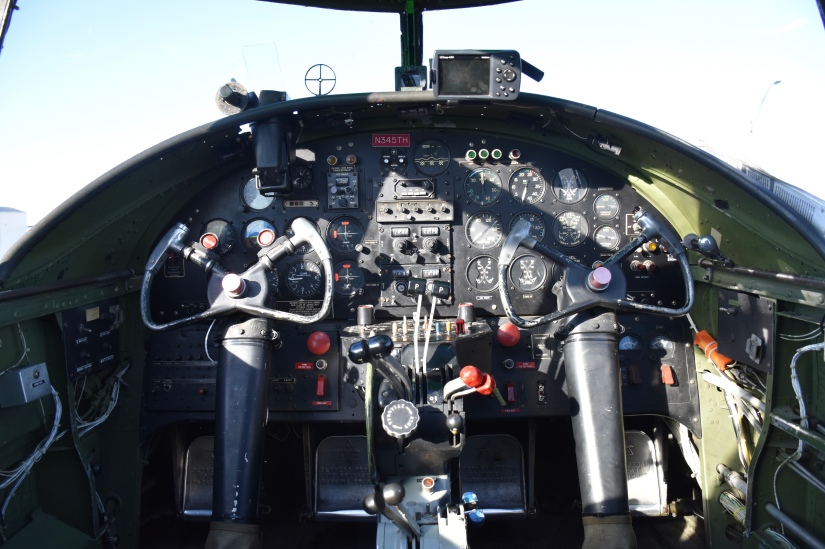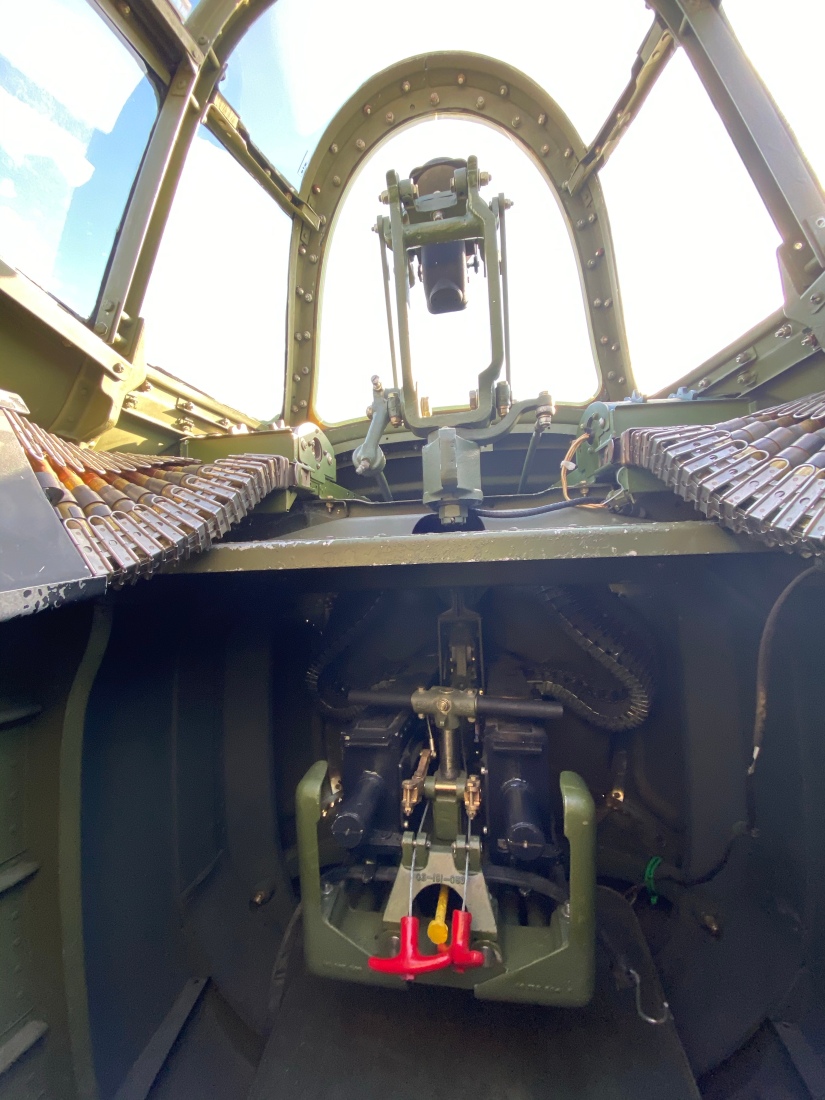The formidable B-25 Mitchell: a truly great plane and perhaps the most versatile aircraft of World War II.
The B-25 is the only U.S. military plane to be named after a specific person: Brig. Gen. William “Billy” Mitchell, the “Father of the U.S. Air Force.”
Built by Boeing heritage company North American Aviation, the B-25 first flew Aug. 19, 1940. Not only was it used for high and low level bombing, submarine patrol, photo reconnaissance and strafing, the heavily-armed aircraft even operated as a fighter. It was regarded as reliable and forgiving by the pilots who flew it.
The B-25 was used in every theater of the war, flown by American, Dutch, British, Chinese, Russian and Australian pilots. It’s perhaps best known for its role in the famous “Doolittle Raid” — the first air strike by the U.S. against Japan. On April 18, 1942, Lt. Col. James “Jimmy” Doolittle led 16 B-25Bs from the USS Hornet to bomb military targets in and around Tokyo. The mission was a resounding success, boosting American spirits and proving Japan’s vulnerability to air attacks.
Between 1939 and 1945, North American built a total of 9,816 B-25s at its Ingelwood, California, and Kansas City, Kansas, plants. In fact, due in large part to the firm leadership of James “Dutch” Kindelberger, North American built more aircraft during World War II than any other manufacturer, simultaneously building bombers, fighters and trainers — an industry first.
Today, eight decades after the B-25 first took to the skies, 34 are still flying. Among them, a B-25J named “Show Me,” which found its home at the Missouri Wing of the Commemorative Air Force (CAF) in 1982. This particular aircraft — SN 44-31385 — was first delivered to the U.S. Army Air Forces in 1945, where it served as a trainer for 13 years.
When I heard that “Show Me” would be flying this year on Halloween, I knew I had to be there. Working as a historian for Boeing, I’ve learned so much about the incredible array of warbirds we built in the 1940s — and that includes those built by our many heritage companies, North American Aviation among them. But I’ve not had the chance to see many in person, and up until Saturday, that was the case with the B-25.
I reached out to the Missouri Wing a few weeks in advance to let them know I planned to be there, and to see if I might be able to take a quick peek inside the aircraft. It was as if I said “Show Me,” and they said “We will!” I arrived bright and early to meet with some of the wing’s members, including its leader, and they were (unsurprisingly) some of the nicest, most passionate people I’ve met in the industry.
There were about 40-50 folks out at St. Charles County Smartt Airport that morning, all for the same reason: to see “Show Me” take to the skies. For those unfamiliar with CAF, they keep these flying monuments airborne by selling seats on the various aircraft. And what better way to support their incredible mission, than to take a flight on one of these beautiful and beastly legends.


The plan that day was to send two flights up, one right after the other. Before the first flight, I had the chance to hop aboard the aircraft to take some photos. Getting on the aircraft was an adventure in and of itself, as was getting around once I made it inside.
There are two entrances: one to the front and one to the rear — both involve climbing up a ladder through a fairly narrow passage. The front entrance was mainly used by the bombardier/navigator, the pilots and the upper turret gunner. The rear entrance was primarily for the radio operator/waist gunner and tail gunner. Despite the two separate entrances, however, it wasn’t unheard of for the crew to crawl on top of the bomb bay to get to the other end of the aircraft during flight.
To get back to the tail gunner’s compartment, I crawled through a seriously narrow passageway known as the “tail tunnel.” To get up to the bombardier’s compartment, I pulled myself through the “bombardier’s crawlway” directly underneath the left side of the cockpit. Getting around was not easy. It was not comfortable. Exploring the inside of the “Show Me” left me with that much more respect for the crew members who flew in B-25s day in and day out during less than ideal conditions.



Shortly after touring the airplane, it was time to see her fly. The first group of passengers boarded, along with the pilot, copilot and safety officer. The rest of us stood in awe, watching the big, beautiful machine fire up. The two sputtering Wright Cyclone piston engines were loud and smoky, and before we knew it, the plane was making its way down to the end of runway 18. It sat idly for a few minutes, before turning due south, speeding down the runway and lifting off the ground.



Once the plane disappeared into the late morning sky, I decided I needed more caffeine, so my husband and I headed to a local coffee shop. What happened when we returned to the airfield was something neither of us could have ever expected. We were greeted by several of the CAF members we had been chatting with earlier, who informed us we (yes, my husband Scott and I) were going to be on the next flight.
Words can’t express the sheer joy I felt upon hearing that news. It was completely unexpected but so very much appreciated. And just like that, Scott and I, along with three other passengers, were sitting inside “Show Me,” preparing to take to the skies. I sat up front and had the opportunity to spend roughly half of the 45-minute flight up in the bombardier’s compartment. Scott was in the back, and spent most of the flight in the tail gunner’s compartment. We flew along the Mississippi River where we got stunning views of the fall foliage and flew just past downtown St. Louis, making two low passes over the renowned Gateway Arch.






After we landed and deplaned, I was smiling so hard — I mean SO hard — that it hurt. I can’t speak highly enough of the CAF Missouri Wing and feel so honored to have been afforded such a unique experience. I know I’ll be spending plenty of time out at Smartt Field in the future, and I strongly encourage all you AV geeks and/or history buffs to check out your local CAF unit to find out how you can support the great work they do. And yes, I already became a proud member myself!
In addition to “Show Me,” the Missouri Wing maintains a TBM-3E Avenger, built in 1945 by General Motors, and an L-3 Grasshopper, built in 1941 by Aeronca. The Missouri Wing is just one of more than 70 CAF units across the globe. Founded in 1961, the CAF boasts roughly 13,000 members and operates more than 170 aircraft representing more than 60 different types. This unique fleet, known as the CAF Ghost Squadron, is the world’s largest flying museum and just so happens to rank as one of the largest air forces in existence today.
The CAF’s mission is simple: to educate, inspire, and honor through flight and living history experiences. The nonprofit organization prides itself on its volunteers, who work to protect these rare, historic warbirds, and relies on donations and memberships to continue its preservation efforts.
Learn more about the ways in which you can support the CAF: https://commemorativeairforce.org/
